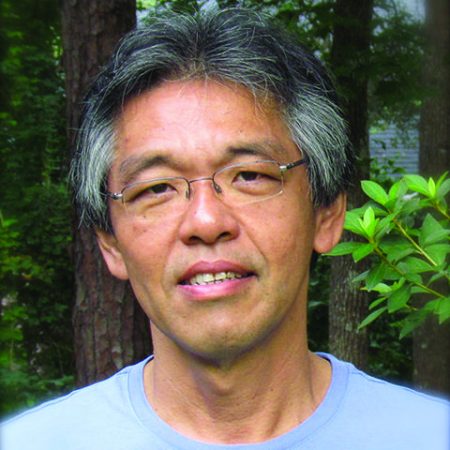
Florida State University mathematics Professor Washington Mio has earned top recognition from his peers for his contributions to the discipline.
Mio has been named a fellow of the American Mathematical Society (AMS), an international association of professional mathematicians dedicated to the interests of mathematical research and scholarship.
“Washington Mio is an excellent mathematician who excels in both pure and applied research,” said Xiaoming Wang, chairman of the Department of Mathematics. “I’m happy to see that he has received this well-deserved recognition.”
The AMS honored Mio, who has taught at FSU since 1990, for his work in topology as well as mathematics, statistics and applications of shape analysis. According to his official citation, Mio was inducted as an AMS fellow “in recognition of his outstanding contributions to the creation, exposition, advancement, communication and utilization of mathematics.”
The 2015 fellows class was chosen by an AMS selection committee to create “an enlarged class of mathematicians recognized by their peers as distinguished for their contributions to the profession … and to support the advancement of mathematicians in leadership positions in their own institutions and in the broader society.” This year, 62 members were inducted as fellows of the organization.
“It is a great honor to be recognized by your fellow mathematicians and very humbling when you look at the list of AMS fellows,” Mio said. “I also see it as a recognition for the contributions that FSU makes to the mathematical sciences.”
Mio joins three of his longtime FSU Department of Mathematics colleagues, emeritus professors John Bryant, Robert Gilmer and De Witt Sumners, who were named to the inaugural class of AMS fellows in 2013.
As an undergraduate starting out in the engineering field, Mio said he found his interests switching directions toward “the mathematical foundations of the methods used to solve problems.” In pursuit of the “fascinating world of mathematics,” Mio studied mathematics at the Courant Institute in New York. He later served as an assistant professor at the Instituto de Matematica Pura e Aplicada in Brazil before pursuing postdoctoral positions at New York University, Cornell University and the University of Pennsylvania. Mio made his way to Florida State in 1990 and became a full professor in 2005.
For many years, his research was based in pure mathematics. Mio worked on very abstract, theoretical problems in the area of geometric topology. As rewarding as those years were, he found himself wanting to spend part of his career applying mathematics to the solution of “real-world” problems. About a decade ago, he began to study patterns underlying data, particularly information contained in shapes and images.
This naturally led to interdisciplinary work that has added new dimensions to his research. Mio is currently working on federally funded research topics as varied as “Developmental Mechanisms Underlying Genotype-Phenotype Correlations,” “Breaking Through the Taxonomic Barrier of the Fossil Record,” “Genetic Determinants of Orifacial Shape and Relationship to Cleft Lip/Palate” and “Topological Methods for Parsing Shapes and Networks and Modeling Variation in Structure and Function.”
“I find it very exciting to see that mathematics has much to offer to the solution of challenging problems at the frontiers of such disciplines as evolutionary and developmental biology, ecology and medicine,” he said. “The problems range from organization and indexing of complex data to the challenges of transforming data into knowledge, with so much in between. One of the great things about mathematics is that it helps you uncover common threads in seemingly disparate problems. Finding these links, developing new mathematical models, and using them to solve problems is very rewarding.”
One of his favorite research moments occurred in the 1990s with Bryant. Together they worked on a “conjecture in the theory of topological manifolds that had resisted several prior attempts to a solution.”
“Cracking that problem after working on it for many years was very special,” Mio said.
While he currently experiences great moments in his line of work, Mio likes to “take an optimistic view” and consider the special moments still to come.
“The greatest ones have been the ‘Aha!’ moments by my students,” he said. “It really feels great seeing them developing into mathematicians.”
With regard to the FSU Department of Mathematics, Mio finds his colleagues to be “an energetic bunch” within a mission-driven department that has added many accomplishments to its name over the years.
“The broad mathematical landscape has evolved significantly in the last two decades, with interdisciplinary activities increasingly playing a larger role,” he said. “The department embraced these changes early on, successfully incorporating new interdisciplinary programs to the more traditional core. This has posed new challenges, but we are on a very solid track and the future looks bright!”
To anyone considering pursuing the field of mathematics, Mio recommended, “Go where your thoughts and passion take you. That is a great place!”




